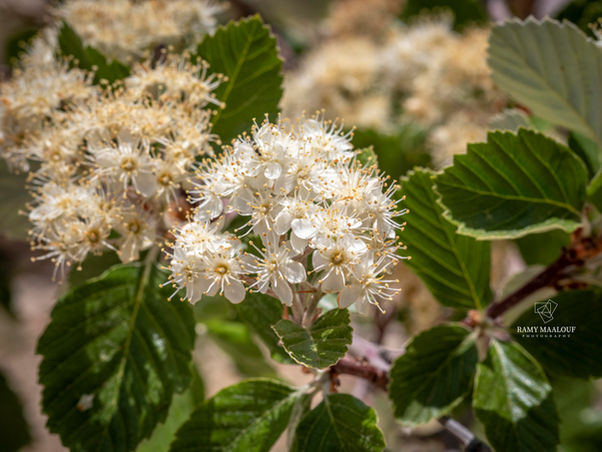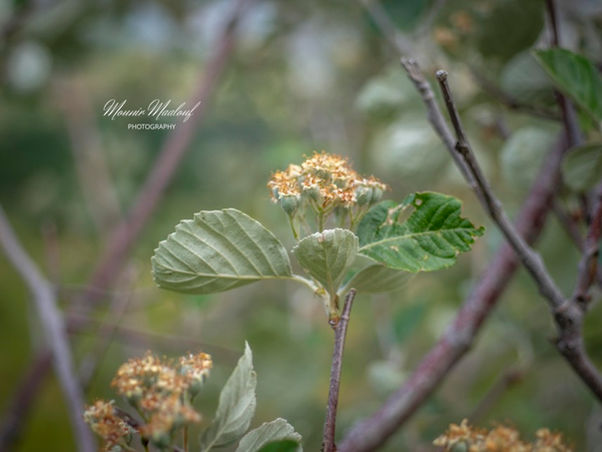Family |
Rosaceae
Aria umbellata
(Desf.) Sennikov & Kurtto
Aria umbellata (Desf.) Fritsch
(Nouvelle Flore du Liban et de la Syrie, vol. 2, Pl. LXXVII nº 2; 1983, under Sorbus flabellifolia)
Life-form & habit: Tree (rarely spared by grazing and not reduced to a meager shrub), up to 5 m tall.
Leaves: 5–7 × 3–5 cm, ovate, not lobed but with marginal teeth divided into large, often denticulate lobules; 5–8 pairs of prominent lateral veins. Upper surface green and glabrous; lower surface grey-white, densely tomentose.
Inflorescence & flowers: Ramified corymbs with long, reddish peduncles and pedicels under a detachable white tomentum. Calyx tomentose, with lobes shorter than the obconical tube. Petals white. Numerous stamens with reddish filaments.
Fruit: Glabrous, brown, ovoid, ca. 1 cm long, crowned by persistent calyx lobes.
Phenology: Flowers in May–June.
Habitat & elevation: Rocky wooded areas in subalpine and montane zones.
Lebanese distribution: Mm. Jabal Barouk, Cedars of ‘Aïn Zehalta, Jabal Sannine, Jabal Abiad above Sir, Jourd Tannourine, Jabal Kneissé, Jabal Jaj near Laqlouq, Sir, east of Douma, Ehden, Forest of Ehden, Qamou‘a.
Syrian distribution: A.L. North of Bloudane; Mm. Slenfé, Col de Chatha.
Native range: Turkey, Syria, Lebanon, Iran and SE. Europe to Caucasus










